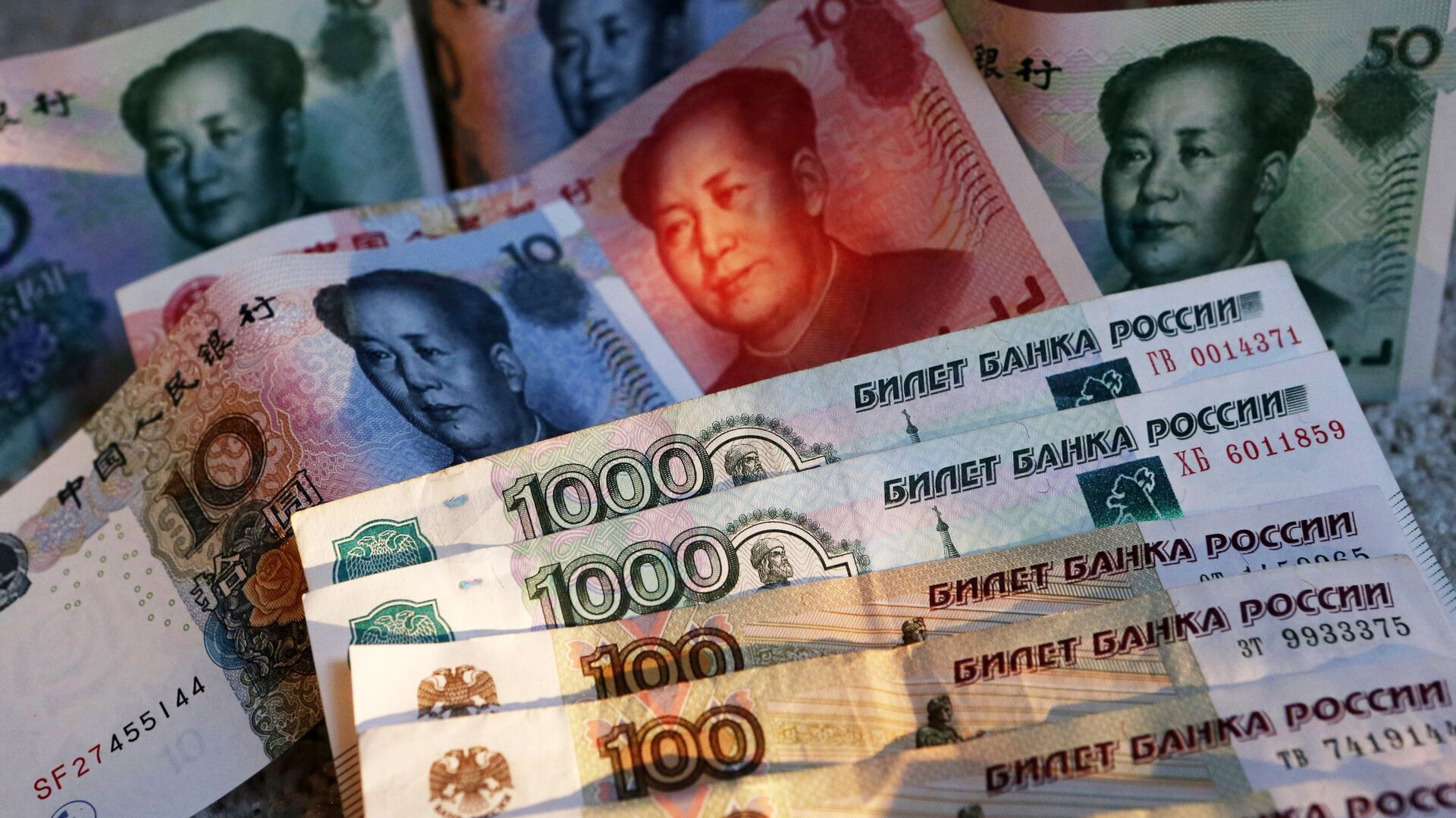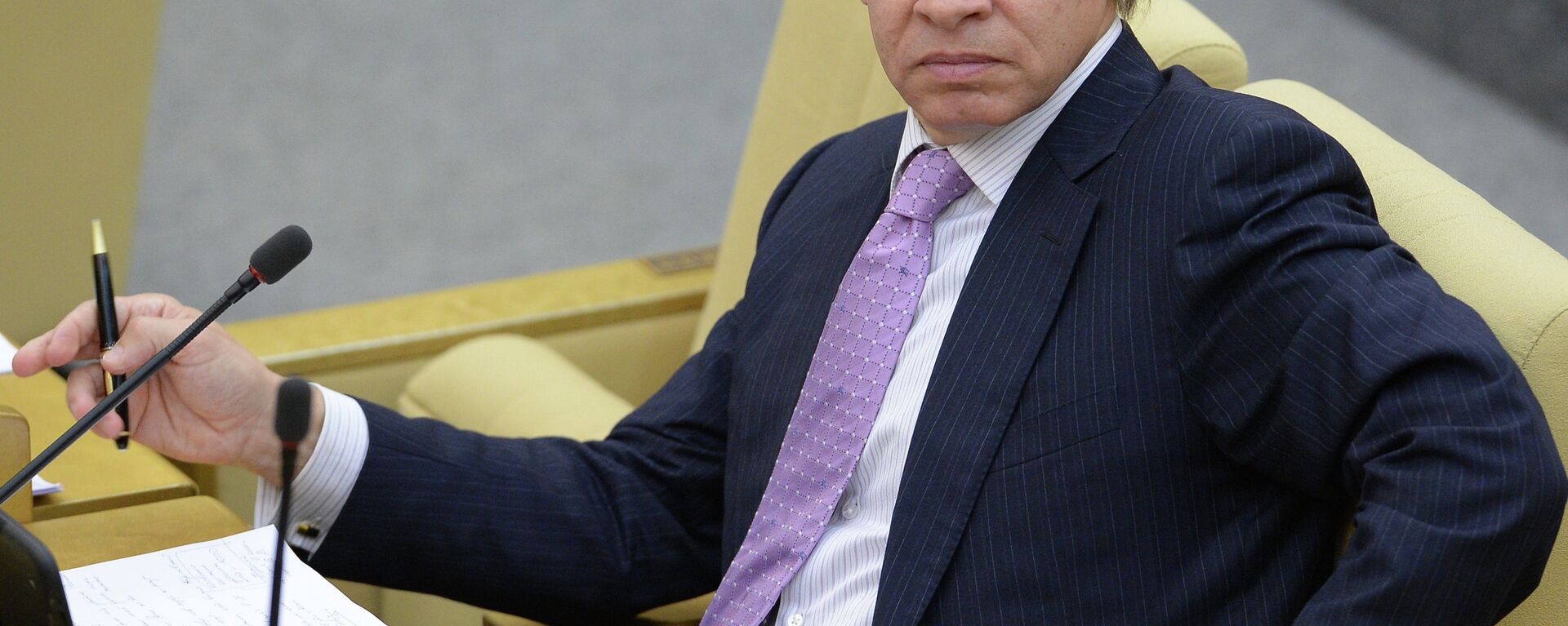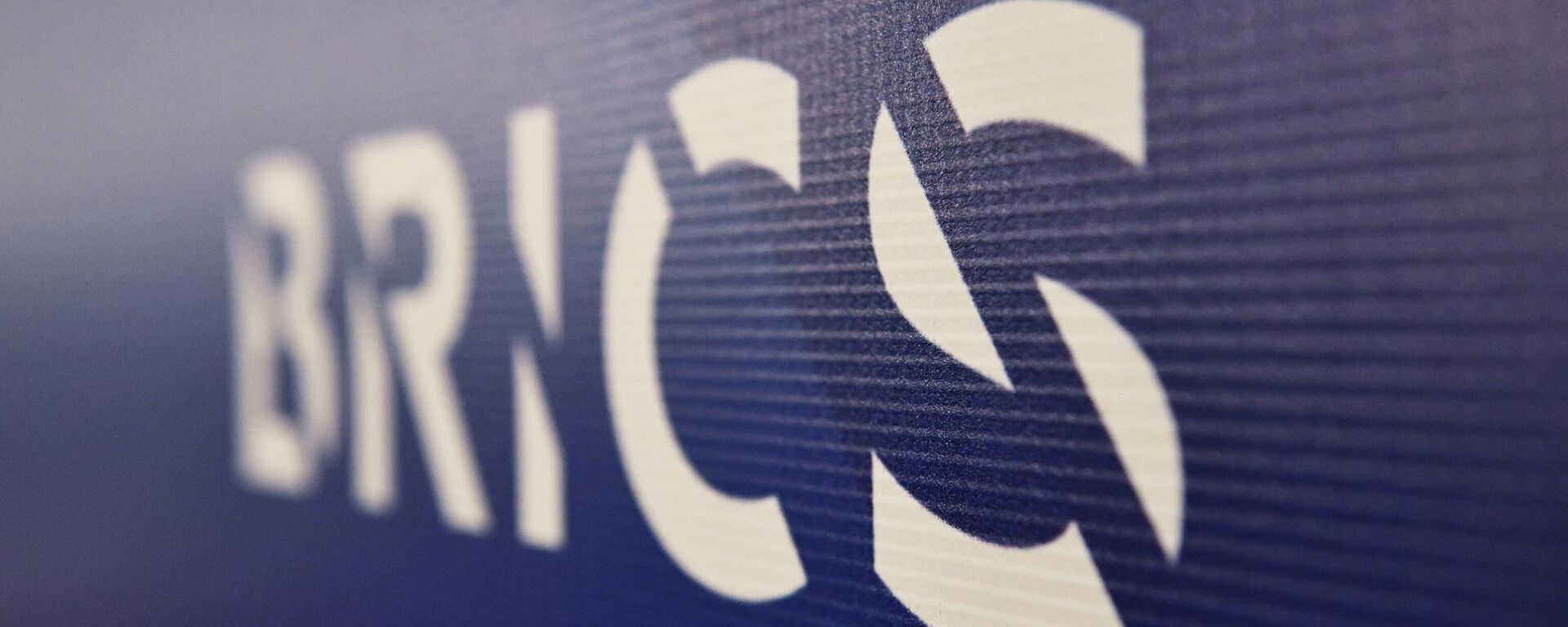https://sputnikglobe.com/20230802/how-much-does-brics-contribute-to-world-gdp-1112307546.html
How Much Does BRICS Contribute to World GDP?
How Much Does BRICS Contribute to World GDP?
Sputnik International
The BRICS nations have made significant economic growth over the past several years, showcasing their potential to influence the world economy and challenging the traditional Western dominance.
2023-08-02T14:09+0000
2023-08-02T14:09+0000
2023-09-01T12:35+0000
russia
china
world
brazil
society
newsfeed
brics
world bank
new development bank (ndb)
contingent reserve arrangement (cra)
https://cdn1.img.sputnikglobe.com/img/107145/52/1071455222_0:129:3187:1921_1920x0_80_0_0_e91eda67f64d6896a38ccdab9cd25ab2.jpg
BRICS member states (Brazil, Russia, India, China, and South Africa) have increased their share in global GDP, outperforming the G7. But what is GDP and why does it matter? Sputnik explains.What is GDP?GDP stands for Gross Domestic Product, which is the total value of all goods and services produced within a country in a given period, usually a year. It's like the totality of all the money gained from various activities in a country.GDP is a way to measure the total economic output or the size of a country's economy. It helps understand how much a country produces regarding goods and services.Imagine the world economy as a big store, where many things are bought and sold. GDP is like summing up the value of all the items sold in that store over a year.GDP = Consumption + Investment + Government Spending on Goods and Services + (Exports – Imports), written as: Y = C + I + G + (X-M) - this formula summarizes how it is calculated and what each component means. consumption signifies the total number of goods and services citizens have purchased; investment indicates any local investment, or capital expenses, in new acquisitions that deliver prospective gains; government characterizes the money (consumption costs and gross investment) disbursed by the government on goods and service; and exports – imports points to the export of goods and services manufactured within a country and sold abroad, minus bought imports by local customers.As of 2022, the sum of the world's GDP stood at roughly $100.5 trillion, while in the year 2022, the collective BRICS group's GDP was above $26.03 trillion. Therefore, the BRICS nations' GDP represents approximately 25.9% of the world's GDP in 2022.According to the World Bank, the global GDP growth rate (annual percent) has been graphical since 2020, when it rose from -3.1 to 6 percent in 2021, and dipped to 3.1 percent in 2022.How Does BRICS Contribute to Global GDP?The rise of BRICS has demonstrated the possibility of a power shift from the Global North to the South. Due to factors like demographics, natural resources, geographical scope, and expanding industrial capacity, it wields much clout.Experts who have studied the IMF data on GDP based on purchasing power parity from 1982 onwards have observed noteworthy trends regarding the BRICS countries. Over the period of 1982 to 2022, the share of BRICS nations' GDP in the world's economy has consistently risen, with an annual growth rate of 2.75 percent.According to a 2023 BRICS Investment Report by the United Nations Conference on Trade and Development (UNCTAD), the average earnings per person in the BRICS economies in 2021 was $7,666, while $12,263 was the global per capita GDP. Nevertheless, if we consider the purchasing power of money in each country, the average income for people in the BRICS member nations is $17,990, which is almost the same as the global average of $18,721.The 2022 value of exported merchandise from each of the BRICS member states (except Russia, with 2021 data):When it comes to international trade, the BRICS economies represent 18 percent of global exports. Nevertheless, their share has been on the rise, and the growth rate of intra-BRICS exports surpasses the global average, according to UNCTAD.The IMF predicts that by 2028, the BRICS nations will collectively contribute about one-third (33.7 percent) of the world's economy, based on PPP (purchasing power parity compares the standard of living or economic well-being between different countries).What is the Population of BRICS Countries Compared to the World?According to reports, the total population of the BRICS nations currently stands at roughly 3.26 billion people - India (1,425,775,850 billion), China (1,412,175,000 billion), Brazil (215,313,498 million), Russia (146,447,424 million), and South Africa (59,893,885 million), comprising about 41.13 percent of the global population (little over 8 billion).The large populations of BRICS countries contribute significantly to their GDP through abundant labor, a sizable consumer base, human capital, economic diversity, urbanization, and investment in research and development. However, other factors also play crucial roles in shaping their economic performance, such as economic policies, natural resources, trade relations, etc.BRICS' Expansive Economic ThrustsLast year, Russia suggested incorporating the BRICS payment system to sidestep the SWIFT system, from which Russia was excluded as the NATO proxy war in Ukraine gained momentum. The BRICS countries also initiated work on a new reserve currency based on the Russian ruble, Indian rupee, Chinese RMB yuan, Brazilian real, and South African rand, seeking to escalate de-dollarization as the US has weaponized the greenback to impose punitive measures on other countries. Recently, discussions have taken place on establishing a common single currency for the BRICS nations based on a basket of "R5" currencies.The focal point of the forthcoming 15th BRICS Summit in August 2023 is a proposal for a gold-backed digital currency, which has the potential to impact international monetary policy and challenge the US dollar’s hegemony. The currency aims to provide an alternative mode of conducting global trade and building reserves, delivering benefits like expanded financial autonomy and decreased dependence on the US currency.The New Development Bank (NDB), or BRICS bank, and the BRICS CRA Contingent Reserve Arrangement (CRA) show how much influence the group can wield. The NDB was created to fund development projects in emerging economies with a $50 billion initial capital investment. In contrast to multilateral banks like the World Bank, all member countries in the NDB have the same shares and decide things together. It provided over $29 billion in loans to developing countries between 2017 and 2021, mostly for infrastructure projects. The BRICS CRA is a $100 billion fund to help BRICS nations handle imbalanced payments for member countries during times of economic volatility. The NDB and CRA were established as options to international financial bodies controlled by the West.Does the BRICS Play a Dominant Role in the Global Economy?The current evolution of BRICS offers significant benefits, such as collective economic growth and regional integration, with potential implications for Western-dominated international norms and relations. However, the upcoming BRICS Summit in South Africa later this month will be closely watched, as it may reinforce existing dynamics or introduce new arrangements that will shape the forum's multilateral cooperation. Key agenda items will likely include discussions about expansion plans and practical steps for implementing a proposed BRICS currency. By expanding its membership, BRICS aims to address criticism about differing economic trajectories among its members and establish itself as a political partnership fostering solidarity with the Global South. Additionally, the group's efforts to challenge the dominance of the greenback as the default reserve currency indicate a resistance to prevailing global hegemonies. Nevertheless, the bloc has continued to show prospects for long term growth and development.
https://sputnikglobe.com/20150608/1023095027.html
https://sputnikglobe.com/20230725/rise-of-brics-signals-decline-of-us-as-unipolar-superpower-1112128962.html
https://sputnikglobe.com/20230711/multilateralism--reforms-how-brics-currency-offers-better-deal-for-global-south-1111820744.html
russia
china
brazil
Sputnik International
feedback@sputniknews.com
+74956456601
MIA „Rossiya Segodnya“
2023
Chimauchem Nwosu
https://cdn1.img.sputnikglobe.com/img/07e7/09/01/1113046371_0:99:1536:1635_100x100_80_0_0_9c5c627283eca931c39fe4852bbb301c.jpg
Chimauchem Nwosu
https://cdn1.img.sputnikglobe.com/img/07e7/09/01/1113046371_0:99:1536:1635_100x100_80_0_0_9c5c627283eca931c39fe4852bbb301c.jpg
News
en_EN
Sputnik International
feedback@sputniknews.com
+74956456601
MIA „Rossiya Segodnya“
Sputnik International
feedback@sputniknews.com
+74956456601
MIA „Rossiya Segodnya“
Chimauchem Nwosu
https://cdn1.img.sputnikglobe.com/img/07e7/09/01/1113046371_0:99:1536:1635_100x100_80_0_0_9c5c627283eca931c39fe4852bbb301c.jpg
brics, brics nations, brics economies, bric countries, brics economic growth, brics gdp, brics population, brics vs. g7 gdp, brics international market, brics currency, brics bank, new development bank, brics cra, brics summit, brics 2023, brics report, brics investment, brics influence, brics global economy, brics power shift, brics economic expansion, brics annual summits, brics gdp growth, brics demographics, brics human capital, brics global influence, brics resources, brics trade, brics exports, brics imports, brics currency basket, brics gold-backed digital currency, brics financial autonomy, brics new development bank projects, brics contingent reserve arrangement, brics international relations, brics economic bloc, brics world economy, brics emerging markets, brics development projects
brics, brics nations, brics economies, bric countries, brics economic growth, brics gdp, brics population, brics vs. g7 gdp, brics international market, brics currency, brics bank, new development bank, brics cra, brics summit, brics 2023, brics report, brics investment, brics influence, brics global economy, brics power shift, brics economic expansion, brics annual summits, brics gdp growth, brics demographics, brics human capital, brics global influence, brics resources, brics trade, brics exports, brics imports, brics currency basket, brics gold-backed digital currency, brics financial autonomy, brics new development bank projects, brics contingent reserve arrangement, brics international relations, brics economic bloc, brics world economy, brics emerging markets, brics development projects
BRICS member states (Brazil, Russia, India, China, and South Africa) have increased their share in global GDP, outperforming the G7. But what is GDP and why does it matter? Sputnik explains.
GDP stands for Gross Domestic Product, which is the total value of all goods and services produced within a country in a given period, usually a year. It's like the totality of all the money gained from various activities in a country.
GDP is a way to measure the total economic output or the size of a country's economy. It helps understand how much a country produces regarding goods and services.
Imagine the world economy as a big store, where many things are bought and sold. GDP is like summing up the value of all the items sold in that store over a year.
GDP = Consumption + Investment + Government Spending on Goods and Services + (Exports – Imports), written as:
Y = C + I + G + (X-M) - this formula summarizes how it is calculated and what each component means.
consumption signifies the total number of goods and services citizens have purchased;
investment indicates any local investment, or capital expenses, in new acquisitions that deliver prospective gains;
government characterizes the money (consumption costs and gross investment) disbursed by the government on goods and service; and
exports – imports points to the export of goods and services manufactured within a country and sold abroad,
minus bought imports by local customers.
As of 2022, the
sum of the world's GDP stood at roughly $100.5 trillion, while in the year 2022, the
collective BRICS group's GDP was above $26.03 trillion. Therefore, the BRICS nations' GDP represents approximately 25.9% of the world's GDP in 2022.
According to the World Bank, the
global GDP growth rate (annual percent) has been graphical since 2020, when it rose from -3.1 to 6 percent in 2021, and dipped to 3.1 percent in 2022.
How Does BRICS Contribute to Global GDP?
The rise of BRICS has demonstrated the possibility of a power shift from the Global North to the South. Due to factors like demographics, natural resources, geographical scope, and expanding industrial capacity, it wields much clout.
Experts who have studied the IMF data on GDP based on purchasing power parity from 1982 onwards have observed noteworthy trends regarding the BRICS countries. Over the period of 1982 to 2022, the share of BRICS nations' GDP in the world's economy has consistently risen, with an annual growth rate of 2.75 percent.
According to a
2023 BRICS Investment Report by the United Nations Conference on Trade and Development (UNCTAD), the average earnings per person in the BRICS economies in 2021 was $7,666, while $12,263 was the global per capita GDP. Nevertheless, if we consider the purchasing power of money in each country, the average income for people in the BRICS member nations is $17,990, which is almost the same as the global average of $18,721.
The 2022 value of exported merchandise from each of the BRICS member states (except Russia, with 2021 data):
1.
China reached $3.59 trillion, showing a 6.87 percent increase over the previous year.
2.
Brazil totaled $334 billion in 2022, reflecting a notable 19.1 percent jump compared to 2021.
3.
India amounted to $452 billion in 2022, experiencing a significant 14.6 percent growth as against 2021.
4.
South Africa raked in $121 billion, showing a slight 0.243 percent increase from 2021.
5.
Russia registered $492 billion in 2021, showing a 46 percent boost in comparison to the previous year.
When it comes to international trade, the BRICS economies represent 18 percent of global exports. Nevertheless, their share has been on the rise, and the growth rate of intra-BRICS exports surpasses the global average, according to UNCTAD.
The IMF predicts that by 2028, the BRICS nations will collectively contribute about one-third (33.7 percent) of the world's economy, based on PPP (purchasing power parity compares the standard of living or economic well-being between different countries).
What is the Population of BRICS Countries Compared to the World?
According to reports, the total population of the BRICS nations currently stands at roughly 3.26 billion people - India (
1,425,775,850 billion), China (
1,412,175,000 billion), Brazil (
215,313,498 million), Russia (
146,447,424 million), and South Africa (
59,893,885 million), comprising about 41.13 percent of the global population (little over 8 billion).
The large populations of BRICS countries contribute significantly to their GDP through abundant labor, a sizable consumer base, human capital, economic diversity, urbanization, and investment in research and development. However, other factors also play crucial roles in shaping their economic performance, such as economic policies, natural resources, trade relations, etc.
BRICS' Expansive Economic Thrusts
Last year,
Russia suggested incorporating the BRICS payment system to sidestep the SWIFT system, from which Russia was excluded as the NATO proxy war in Ukraine gained momentum. The BRICS countries also initiated work on a new reserve currency based on the Russian ruble, Indian rupee, Chinese RMB yuan, Brazilian real, and South African rand, seeking to escalate de-dollarization as the US has weaponized the greenback to impose punitive measures on other countries. Recently, discussions have taken place on establishing a common single currency for the BRICS nations based on a basket of "R5" currencies.
The focal point of the forthcoming
15th BRICS Summit in August 2023 is a proposal for a gold-backed digital currency, which has the potential to impact international monetary policy and challenge the US dollar’s hegemony. The currency aims to provide an alternative mode of conducting global trade and building reserves, delivering benefits like expanded financial autonomy and decreased dependence on the US currency.
The New Development Bank (NDB), or
BRICS bank, and the
BRICS CRA Contingent Reserve Arrangement (CRA) show how much influence the group can wield. The
NDB was created to fund development projects in emerging economies with a $50 billion initial capital investment. In contrast to multilateral banks like the World Bank, all member countries in the NDB have the same shares and decide things together.
It provided over $29 billion in loans to developing countries between 2017 and 2021, mostly for infrastructure projects. The BRICS CRA is a $100 billion fund to help BRICS nations handle imbalanced payments for member countries during times of economic volatility. The NDB and CRA were established as options to international financial bodies controlled by the West.
Does the BRICS Play a Dominant Role in the Global Economy?
The current evolution of BRICS offers significant benefits, such as collective economic growth and regional integration, with potential implications for Western-dominated international norms and relations.
However, the upcoming BRICS Summit in South Africa later this month will be closely watched, as it may reinforce existing dynamics or introduce new arrangements that will shape the forum's multilateral cooperation. Key agenda items will likely include discussions about expansion plans and practical steps for implementing a proposed BRICS currency. By expanding its membership, BRICS aims to address criticism about differing economic trajectories among its members and establish itself as a political partnership fostering solidarity with the Global South.
Additionally, the group's efforts to challenge the dominance of the greenback as the default reserve currency indicate a resistance to prevailing global hegemonies. Nevertheless, the bloc has continued to show prospects for long term growth and development.





